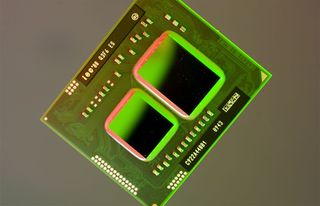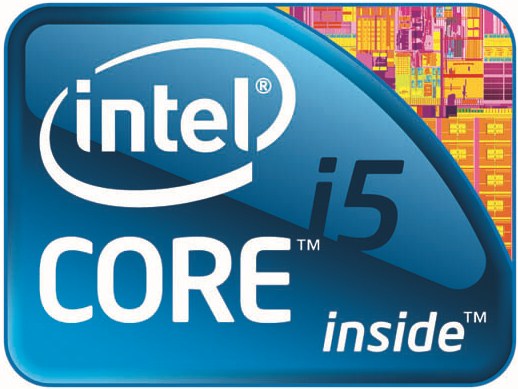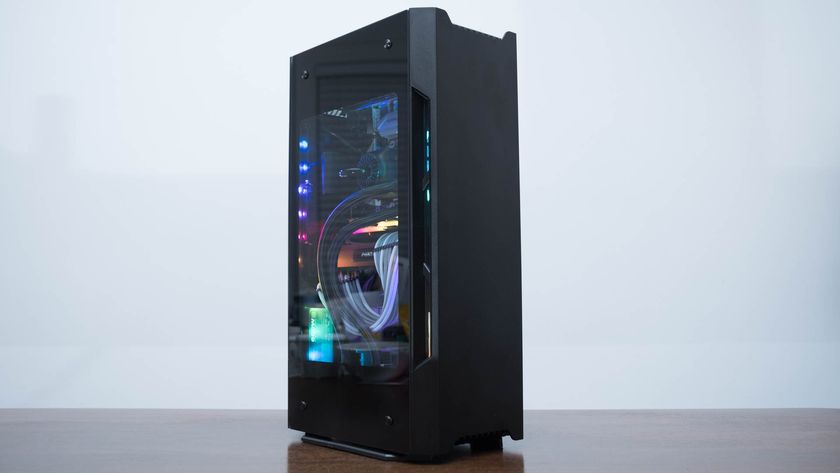Why you can trust TechRadar

Enter, therefore, Intel's Arrandale processor. That's the codename for the mobile version of essentially the same CPU-GPU combination found in desktop Core i3-500 and i5-600 processors.
Except in mobile format, Intel will be applying the full whammy of Core i3, i5 and i7 Mobile monikers depending on differentiators such as clock speeds and cache memory.
Two chips in one
What all Arrandale chips share is a two-chip construction under the hood. Just like the Clarkdale desktop version, the first chip is a 32nm item housing a pair of execution cores and a helping of cache memory.
The second leverages Intel's older 45nm transistors and packs the memory controller, PCI Express and that controversial graphics core.
Our review model is the midranging Core i5-540M. It's officially rated at 2.53GHz with a top Turbo of 3.06GHz and rocks 3MB of cache. Serving as a yardstick we have an example of Intel's existing Core 2 Duo mobile processor in 2.4GHz trim.
Not the fastest Core 2 Duo available, therefore, and not a like-for-like comparison in terms of operating frequencies.
Pulverising performance
Despite that, the advantage this new chip carves out is still stunning. It's nearly twice as fast in our HD video encoding and professional rendering benchmarks. Memory bandwidth has likewise ballooned from under 6GB per second to nearly 10GB per second.
Shift the emphasis to high-definition video decoding and things look just as impressive. A 2.4GHz Core 2 struggles to cope with the BBC's 720p iPlayer streaming video, for instance, dropping frames and running at around 90 to 95 per cent CPU time.
But the 540M shrugs that task off in return for just 40 to 50 per cent of available CPU resources. Stunning.
If you're wondering how this is possible, it's down to features such as HyperThreading that come with the Nehalem-class architecture that underpins Intel's latest mobile chips. It all adds up to what Intel rightfully claims is quad-core rivaling performance from a dual-core processor.
Current page: Intel Core i5 540M: Technical details
Prev Page Intel Core i5 540M: Overview Next Page Intel Core i5 540M: PerformanceTechnology and cars. Increasingly the twain shall meet. Which is handy, because Jeremy (Twitter) is addicted to both. Long-time tech journalist, former editor of iCar magazine and incumbent car guru for T3 magazine, Jeremy reckons in-car technology is about to go thermonuclear. No, not exploding cars. That would be silly. And dangerous. But rather an explosive period of unprecedented innovation. Enjoy the ride.














